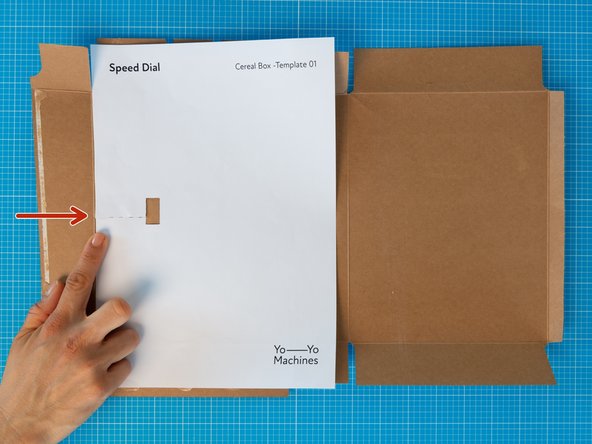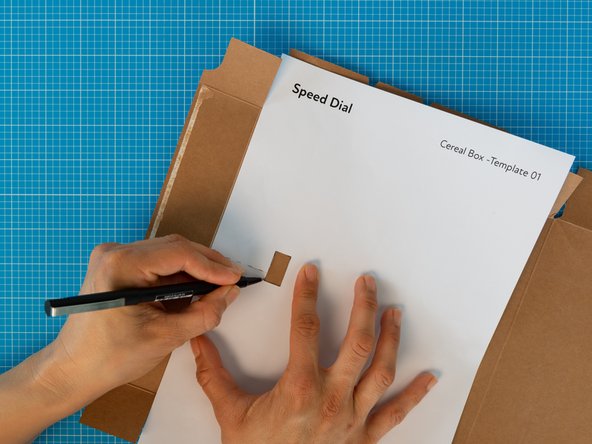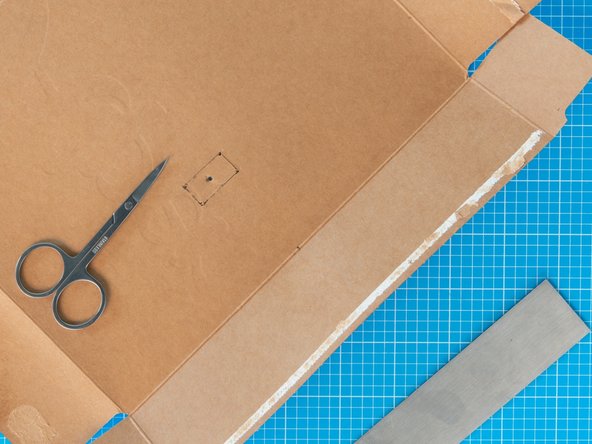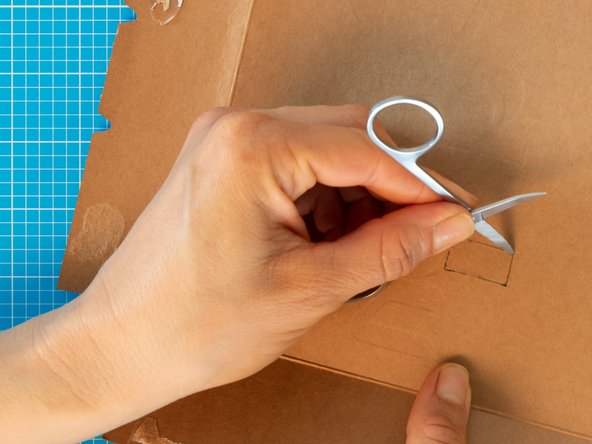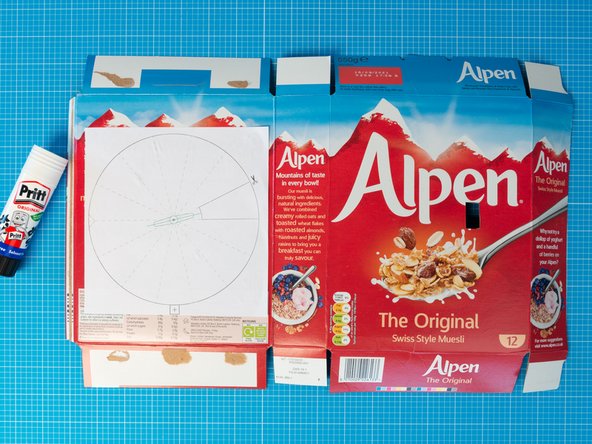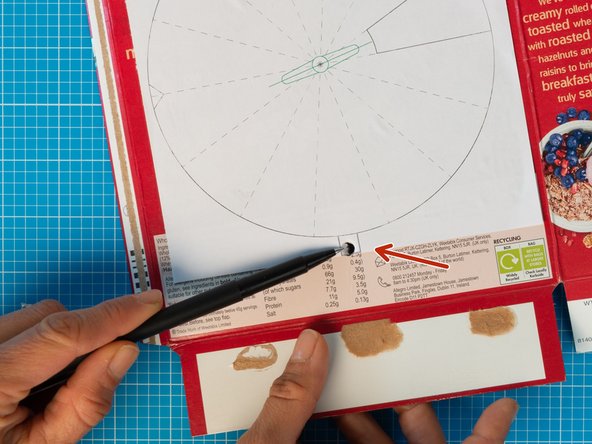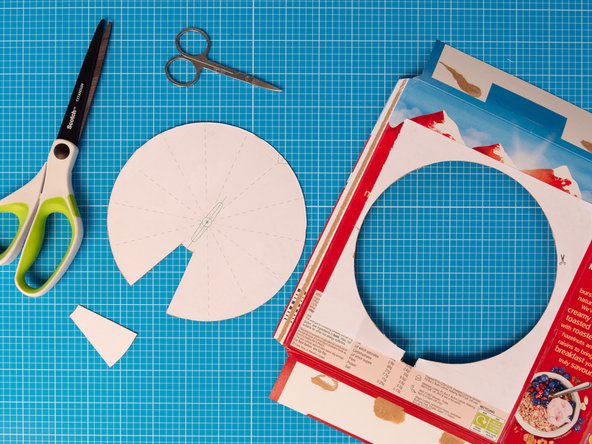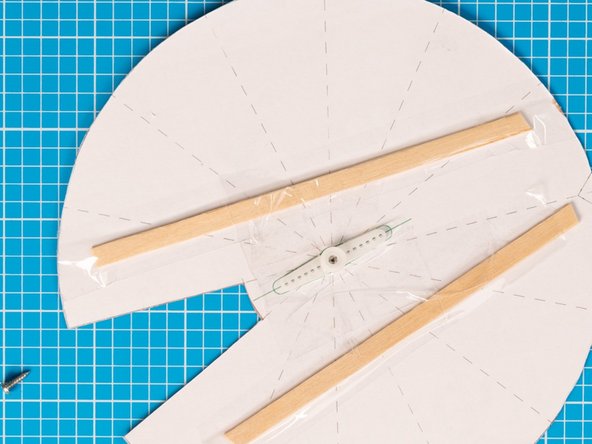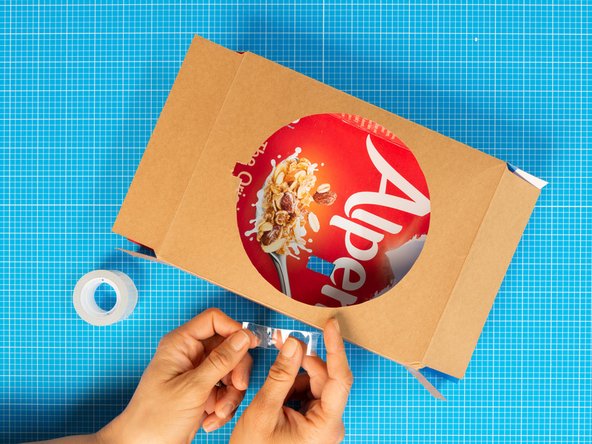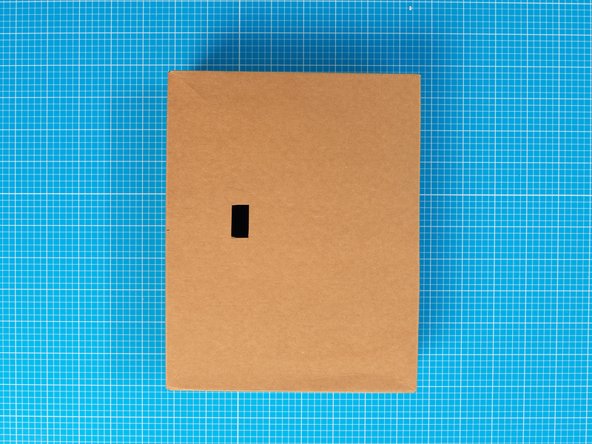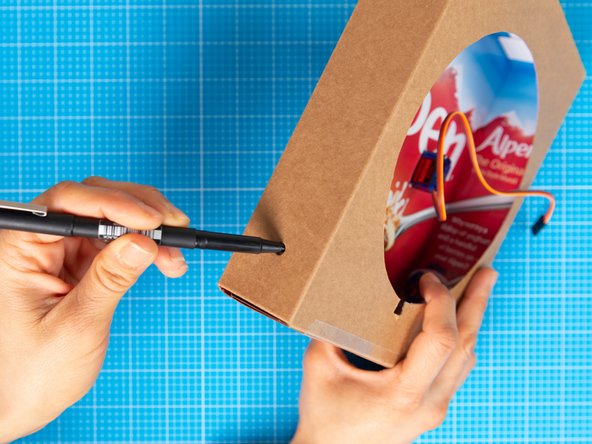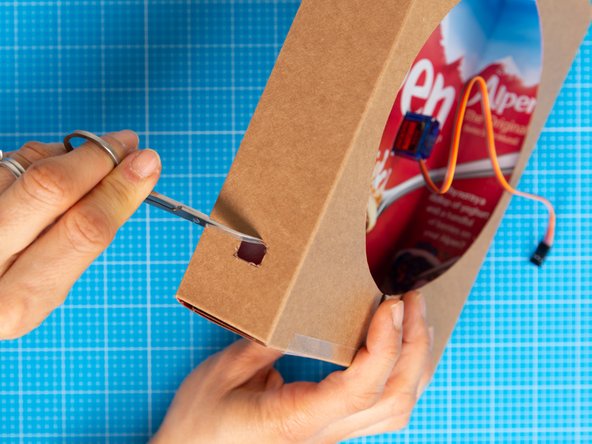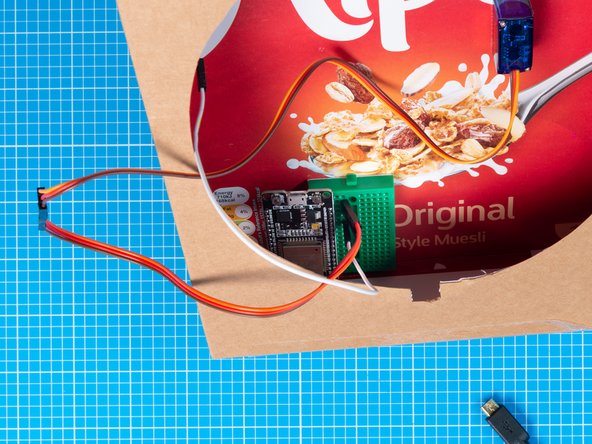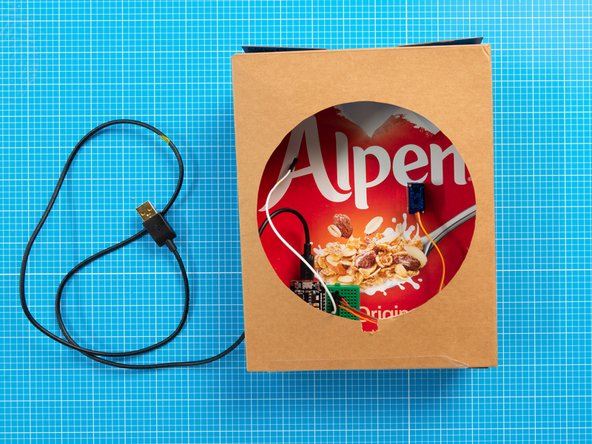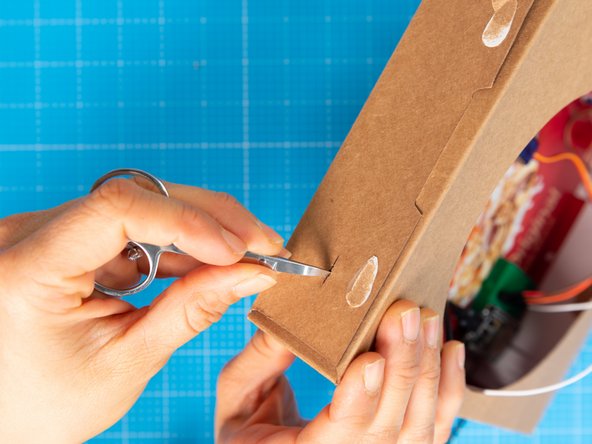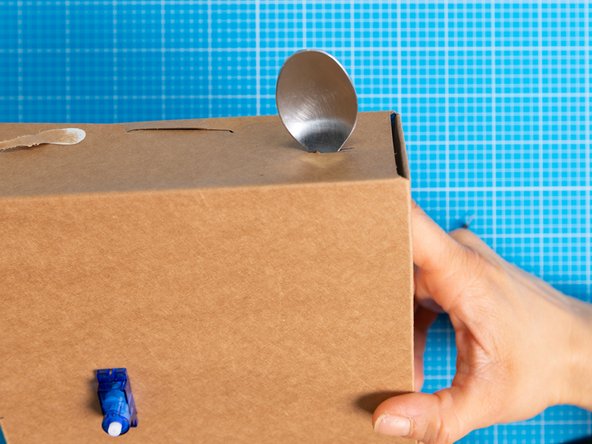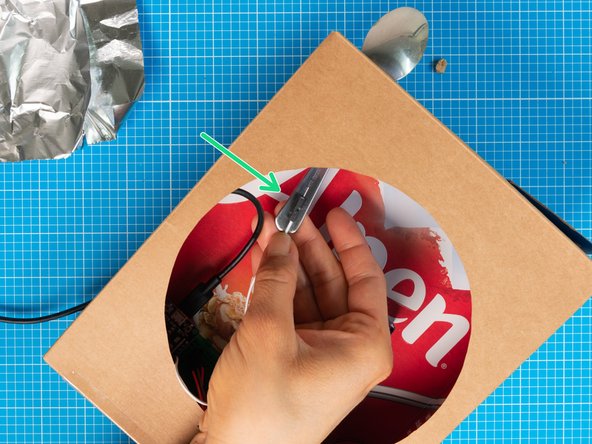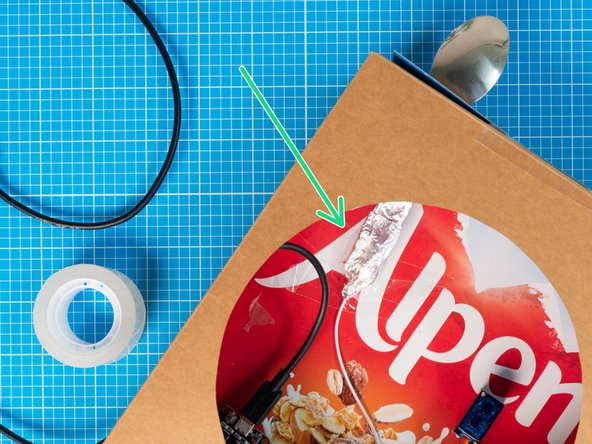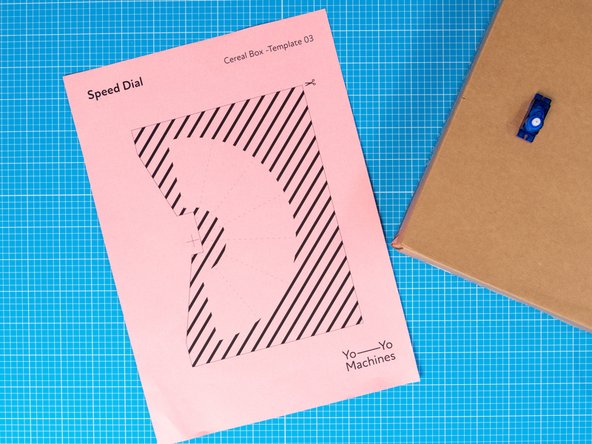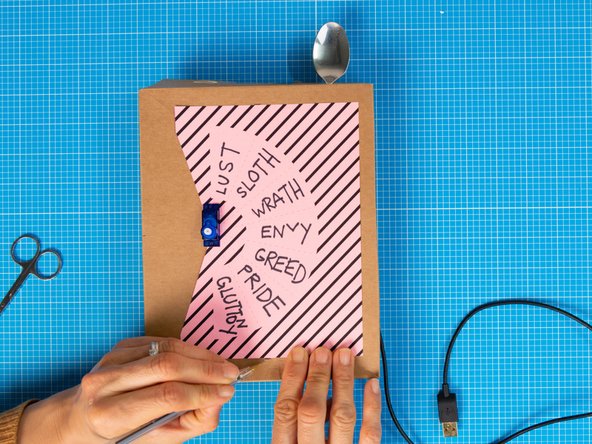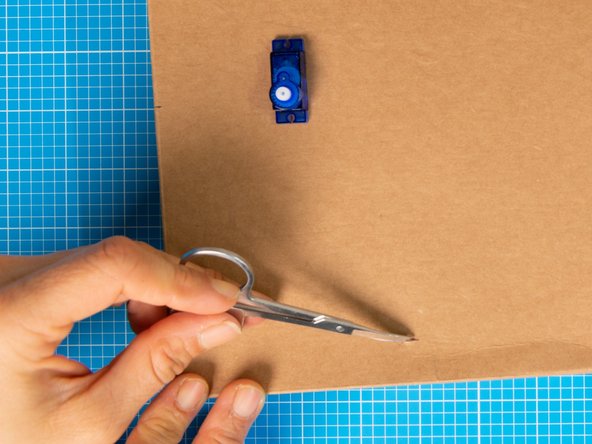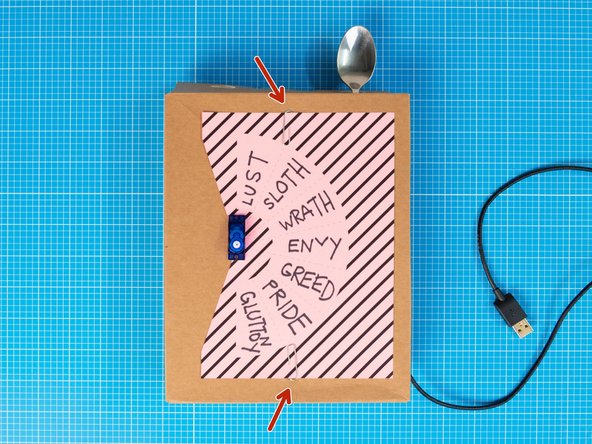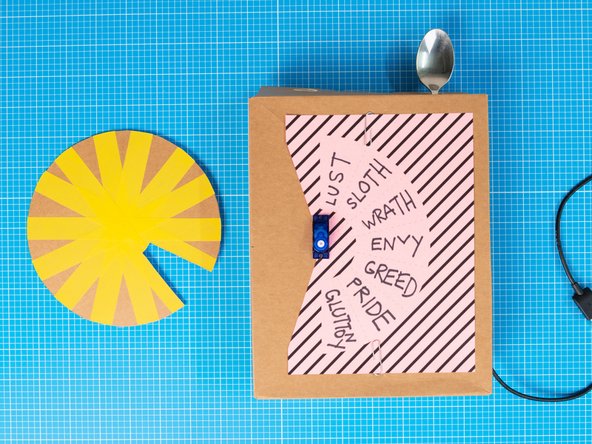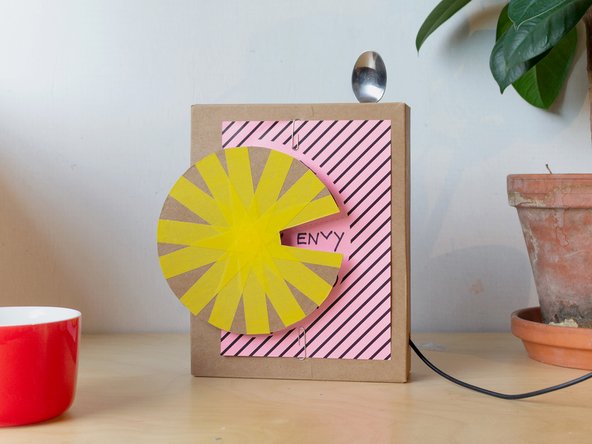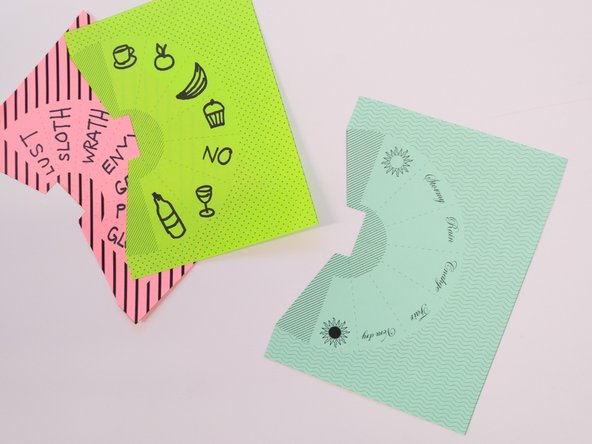Introduction
Build a Speed Dial from a cereal box, sellotape and a paperclips. Make a button using a teaspoon and kitchen foil. Use one of the templates we provide, or decorate your own to create tailored messages that you and your remote companion can exchange.
To begin this step you’ll need to have your Speed Dial breadboard assembly already made (one or two of them depending on whether you are intending to pair them yourself, or pair remotely). You’ll also need to have ready the necessary tools and parts which can be sourced from a range of independent online retailers - click the parts links for more details including tailored options for certain countries.
-
-
Gather the items from the parts and tools lists
-
You will need the following templates included in the PDF below:
-
Template 01 - Mount hole
-
Template 02 - Wheel
-
Template 03 - Dial (pick one version and print in coloured card)
-
Make sure to choose a 100% scale or use the measurements indicated on the templates.
-
-
-
Disassemble the cereal box carefully to turn it inside out . The clear cardboard side will be the outside of the box.
-
-
-
Cut the rectangular shape of template No. 1 following the black lines. The page will be your template.
-
Place the box flat with the brown cardboard side facing up.
-
Pick the rectangular panel that will be the front of the the box. Align the template with the left edge of that face.
-
The centre line in the template can be used to align the position of the motor with the centre of box panel.
-
Mark the rectangle on the cardboard with a pen
-
Alternatively you can draw a rectangle directly on the box using the dimensions indicated on the template. Place it towards the left side roughly about 4 cms from the edge.
-
-
-
Pierce a hole in the centre of the rectangle pointed tool such as a pen or the small scissors.
-
Starting from the hole in the centre, cut out the rectangular shape with the nail scissors.
-
For a sharper cut, gently score the outline and corners of the rectangle with the sharp tip of scissors before cutting.
-
-
-
Turn the box so that the cereal graphics are facing towards you. You will be working now on what will be the inside of the box.
-
Roughly cut template no. 2 and glue it on panel that will be the back of you box (opposite to the panel with the rectangular cut). The circle should be roughly in the center with the square towards the bottom.
-
Very carefully create a hole in the square using a pointed tool such as a pen, a bradawl, or the point of a compass.
-
Cut the circular shape with scissors starting from the hole. Once you have the circle cutout, cut the opening on the wheel.
-
-
-
Fix the stirrer sticks across the wheel with tape. Trim to size if necessary. The supports will keep the wheel straight when mounted on the device.
-
Carefully position the servo motor arm on the centre of the wheel, following the green outline on the template. Fix with tape or glue.
-
The wheel has to be centred properly with the servo motor for accuracy. Make sure the arm is in the indicated position and orientation.
-
Optional: You can decorate the wheel with colourful tape or by drawing on it. In this example we marked the segments of the wheel using the template as reference.
-
-
-
Fold the box back into its original shape and fix the flaps with tape or glue.
-
The top lid can be closed with the original tab.
-
-
-
Separate the servo motor from the breadboard assembly by unplugging the cables.
-
Insert the servo motor through the front of the box making sure the motor axis is centrally aligned.
-
The axis should be orientated to the bottom, as shown in the picture. If the servo motor is positioned the other way around, the device will be misaligned
-
-
-
Pierce the side of the box with a pen or a pointy tool to make an opening.
-
Open the hole using the nail scissors until it is large enough to pass the smaller end of the micro USB lead through.
-
-
-
Position and fix the breadboard assembly inside the box. Align it to the bottom so that it can be supported by the base of the box.
-
The breadboard has a double-sided tape backing which can be used to attach it to the inside fo the box.
-
For a good weight distribution, the breadboard and servo motor should be spaced apart. This will make the box more stable.
-
Connect the micro USB to the ESPS32S and reconnect the servo motor to the breadboard assembly, making sure the leads connect correctly.
-
-
-
Mark a slit for fitting a teaspoon on the top of the box. The opening should be wide the enough to pass handle of a teaspoon through.
-
For better stability, place the spoon on the opposite side of the motor.
-
Cut the slit with sharp scissors.
-
Insert the teaspoon.
-
-
-
The capacitive touch button is how you operate the Speed Dial device. In this example, we will make the button out of a spoon and aluminium foil, but other metallic elements (e.g washers, coins) also work.
-
Wrap the metal on the end of the capacitive touch lead with a bit of aluminium foil. This will increase the surface contact between the metal end of the lead and the spoon.
-
Connect the wrapped lead end to the spoon handle by wrapping both parts together with more kitchen foil. Once the connection is ready, it can be taped to the inside of the box to keep it in place.
-
-
-
Choose a dial template to use in your device. Use one of the templates provided or choose a blank one and create your own.
-
Print the dial template directly onto a piece of card or paper. A brightly coloured piece of thin printable card is ideal. Make sure to print at 100% scale on A4 paper.
-
If your card is too thick to go in the printer, you can print the dial template on standard printer paper and stick it to your card, or use it as a template to draw on the card itself.
-
Cut out the dial and decorate with a pen or marker.
-
Using a bold marker will make your message more visible.
-
If you decide to make your own, there are lots of examples on our website to inspire some interesting dialogues.
-
-
-
The dial will be secured to the box with two paper clips.
-
Position the dial in place and mark two slits where the clips will be inserted, on on top and a second on the bottom.
-
Cut the small slits with the sharp scissors.
-
Place the dial back in place and secure with the paper clips.
-
-
-
Plug in your Speed Dial device and wait for the servo motor to finish its startup sequence move.
-
Mount the wheel onto the servo motor, making sure to align the opening and the top-most segment.
-
-
-
You can make and pair both Speed Dial devices in the same household and post one to your remote partner. Alternatively, they can be made remotely and paired via the internet
-
Use the Network Setup guide to pair two Speed Dial devices. We assume you'll do this before you start assembling the electronics, but you can link or re-link them at any time.
-
Tap the teaspoon to move the pointer in the wheel one notch. Your partner's pointer will move to the same position.
-
If you try to move your pointer and it stays in the same position, your partner's device may not be on the network.
-
-
-
The enclosure is finished and ready to use.
-
It's easy to swap in and out different dial messages, which can be secured with the paper clips.
-
Speed Dial devices work best when plugged into dedicated adaptors like phone chargers and left on continuously. They do not run well when plugged into laptops or computers as these will struggle to power the servo motors.
-
Enjoy!
-






